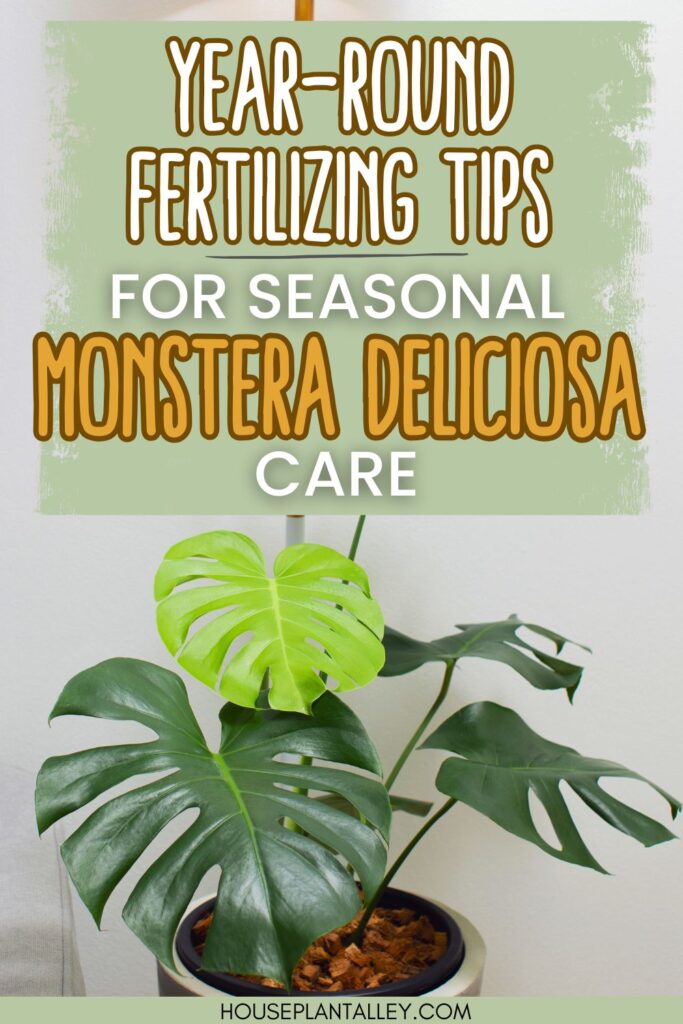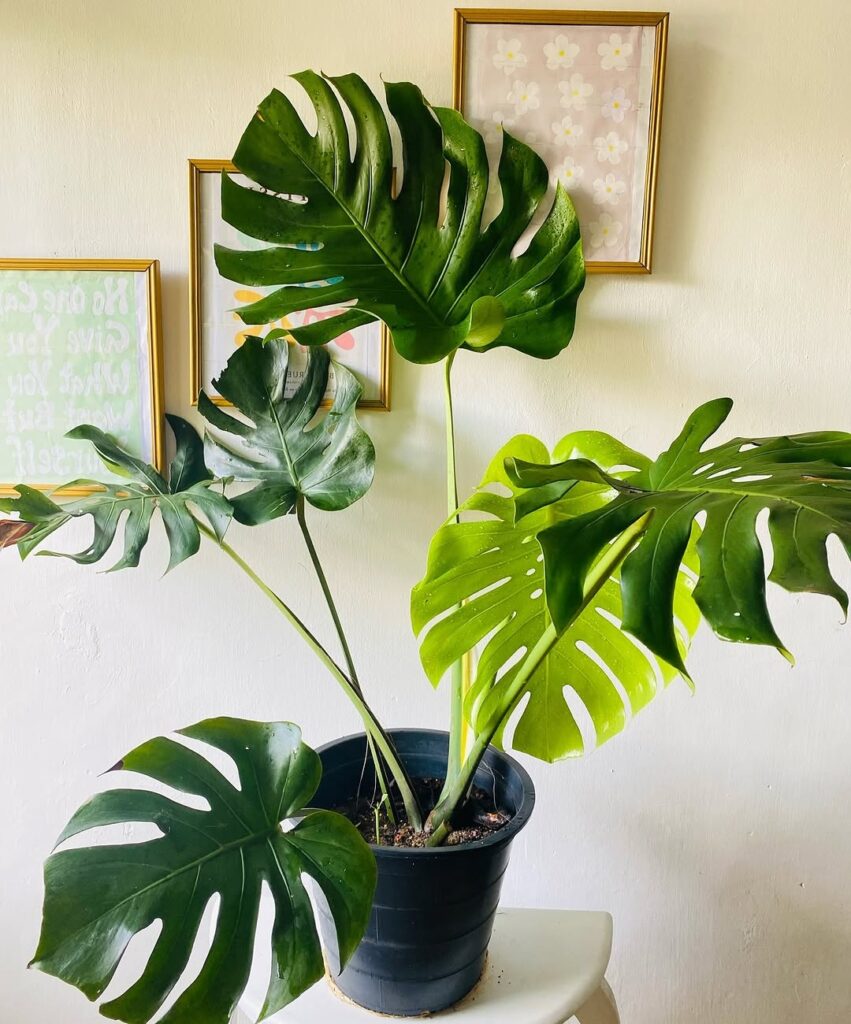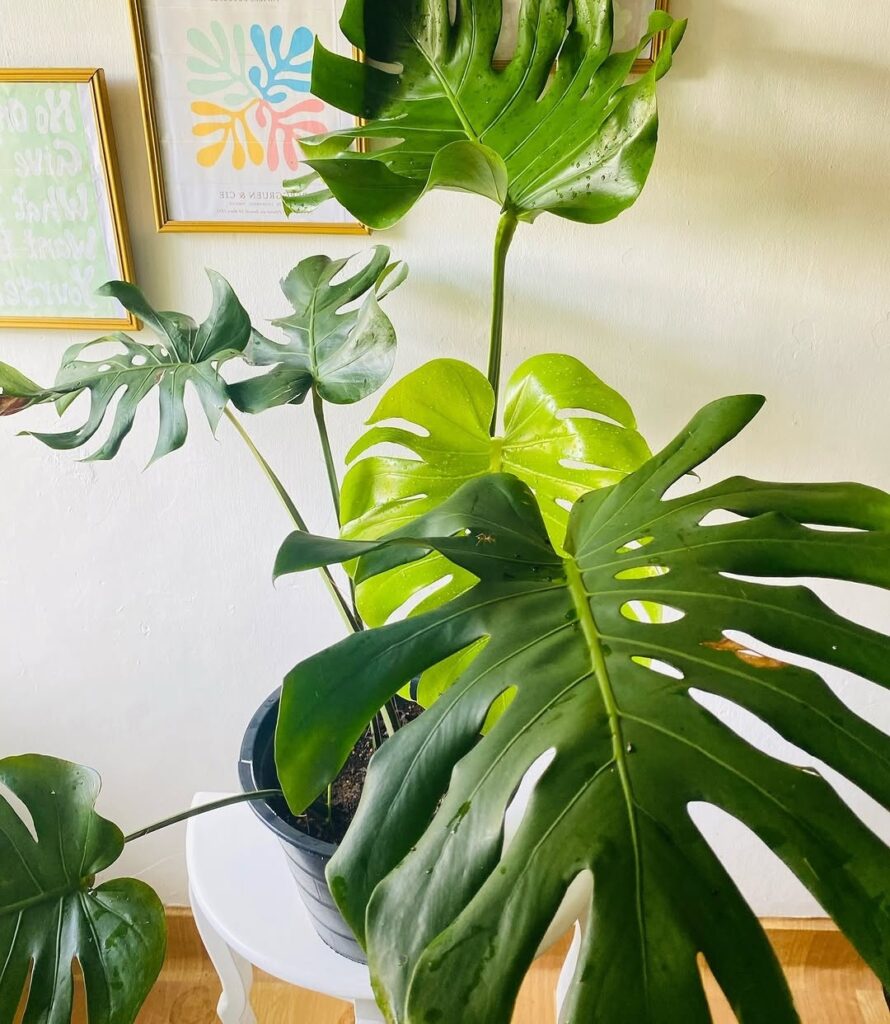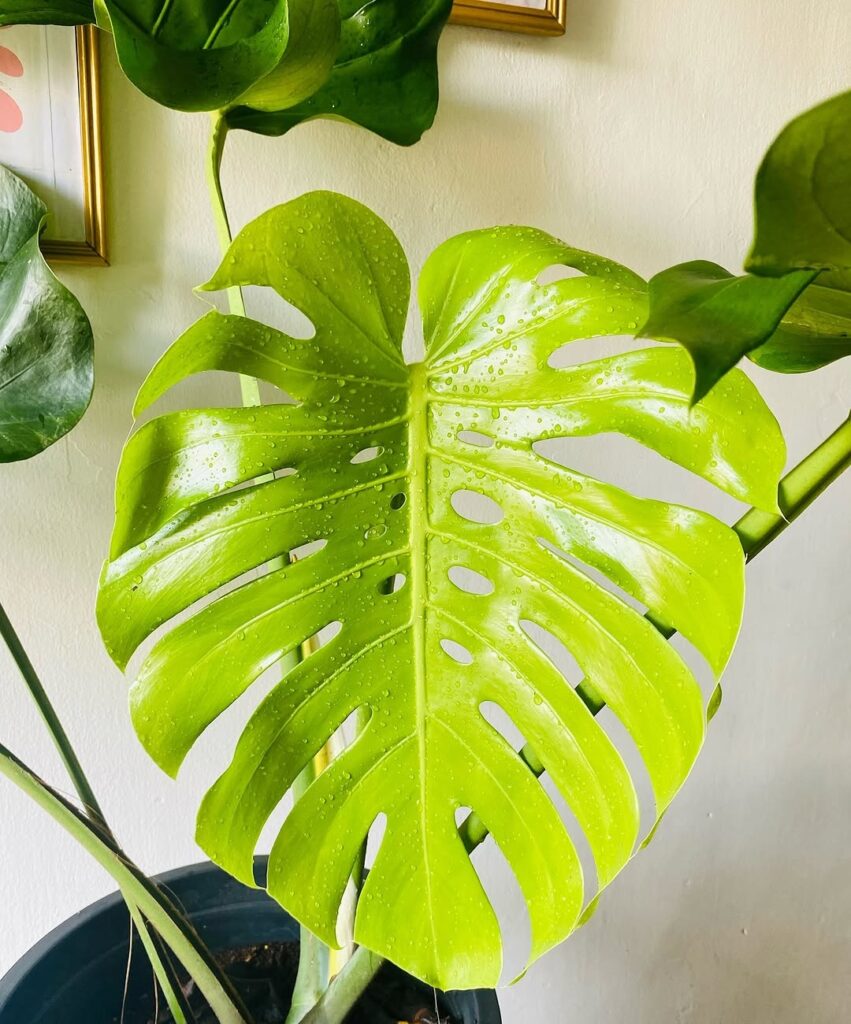Monstera Deliciosa, also known as the Swiss Cheese Plant, is a beloved houseplant known for its striking, fenestrated leaves. To keep your Monstera healthy and thriving, proper fertilization is key. In this blog post, we’ll delve into the ins and outs of fertilizing your Monstera Deliciosa, ensuring you provide it with all the nutrients it needs to flourish.

Contents
Understanding Monstera’s Nutritional Needs
Monstera Deliciosa, like all plants, requires a balance of three primary nutrients: nitrogen (N), phosphorus (P), and potassium (K). These macronutrients play crucial roles in the plant’s growth and development:

- Nitrogen (N): Essential for leaf and stem growth, nitrogen promotes the lush, green foliage that makes Monstera so attractive.
- Phosphorus (P): Crucial for root development and flower production, phosphorus supports the overall health and vitality of the plant.
- Potassium (K): Important for overall plant health, potassium aids in water regulation, disease resistance, and enzyme activation.
In addition to these macronutrients, Monsteras also benefit from micronutrients like calcium, magnesium, and iron, which support various physiological processes.
Choosing the Right Fertilizer

When selecting a fertilizer for your Monstera Deliciosa, it’s important to consider the nutrient ratio (N-P-K ratio) and the type of fertilizer (organic or synthetic). Here’s what to look for:
- N-P-K Ratio: A balanced fertilizer with an N-P-K ratio of 20-20-20 or 10-10-10 is ideal for Monsteras. This ensures that the plant receives an even distribution of essential nutrients.
- Organic vs. Synthetic: Organic fertilizers, such as compost, worm castings, and fish emulsion, release nutrients slowly and improve soil health over time. Synthetic fertilizers, on the other hand, provide a quick nutrient boost but can lead to salt buildup in the soil if overused.
Some popular organic options include seaweed extract (like this one) and liquid kelp, which provide a gentle, steady supply of nutrients. For synthetic options, look for water-soluble or slow-release formulas specifically designed for houseplants.
How to Fertilize Your Monstera

To effectively fertilize your Monstera Deliciosa, follow these steps:
- Dilute the Fertilizer: If you’re using a liquid fertilizer, dilute it to half or even a quarter of the recommended strength. Monsteras are sensitive to over-fertilization, so it’s better to err on the side of caution.
- Apply During Growing Season: Fertilize your Monstera every 4-6 weeks during the growing season (spring and summer). During the dormant season (fall and winter), reduce fertilization to once every 2-3 months.
- Water Before Fertilizing: Water your Monstera thoroughly before applying fertilizer. This helps prevent root burn and ensures even distribution of nutrients.
- Monitor for Signs of Over-Fertilization: Keep an eye out for signs of over-fertilization, such as yellowing leaves, brown leaf tips, and stunted growth. If you notice any of these symptoms, flush the soil with water to remove excess salts and reduce fertilization frequency.
Fertilizing Tips for Variegated Monstera Deliciosa

Variegated Monstera Deliciosa, with their striking white and green leaves, require special care when it comes to fertilization. Here are some tips to ensure your variegated Monstera thrives:
- Balanced Nutrition: Variegated leaves contain less chlorophyll, making them more susceptible to nutrient deficiencies. Use a balanced fertilizer with an N-P-K ratio of 10-10-10 to provide an even distribution of essential nutrients.
- Frequent, Light Feedings: Variegated Monsteras benefit from more frequent, but lighter feedings. Fertilize every 4-6 weeks during the growing season with a diluted liquid fertilizer to avoid over-fertilization.
- Monitor Leaf Color: Keep an eye on the color of the variegated leaves. Yellowing or browning may indicate a nutrient deficiency or over-fertilization. Adjust your fertilization routine accordingly.
- Micronutrient Supplementation: Variegated plants can benefit from additional micronutrients like iron and magnesium. Consider using a foliar spray or supplement to ensure your plant receives all the necessary nutrients.
Fertilizing Tips for Optimal Growth
- Use a Humidity Tray: Placing a humidity tray filled with water and pebbles beneath your Monstera can help create a humid microclimate, which enhances nutrient absorption.
- Rotate Your Plant: Rotate your Monstera every few weeks to ensure even growth and nutrient distribution.
- Repot When Necessary: Monsteras can outgrow their pots quickly. Repot your plant every 1-2 years to refresh the soil and provide ample space for root growth.

Conclusion
By understanding the nutritional needs of your Monstera Deliciosa and following a proper fertilization routine, you can ensure your plant remains healthy, vibrant, and full of those iconic, fenestrated leaves. With the right care and attention, your Monstera will continue to be a stunning centerpiece in your home.
